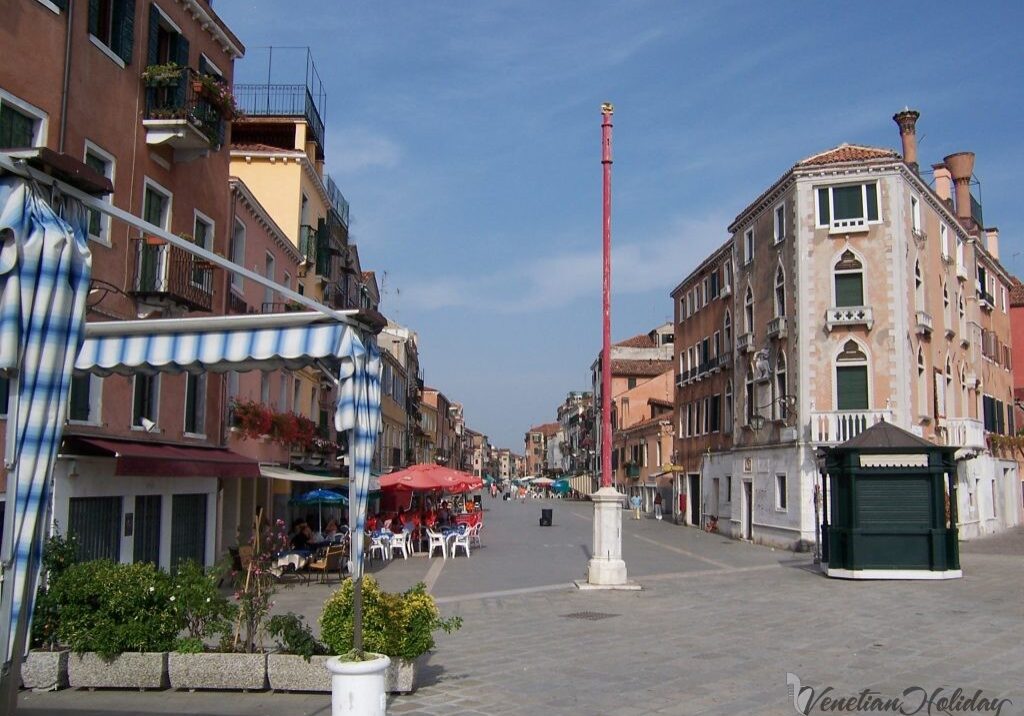The "Low-Key" Sites of Venice


Campo Santi Giovanni e Paolo (San Zanipolo)
This church remains "off the beaten path" and away from the throngs of tourists who visit Venice. Completed in 1430, the construction of this masterpiece lasted 100 years. Argued to be the greatest Gothic church in Venice, this church is the final resting place of 25 Doge’s of Venice as well as numerous other notables such as Giovanni Bellini. Remarkable works from artists such as G. Bellini, P. Veronese, P. Lombardo and countless others adorn the niches of the church.
Outside the church you will find two other great works in the Campo. Scuola Grande di San Marco and the Monument to Bartolomeo Colleoni. The Scuola, to the left of the church entrance, was built between the years 1485 and 1510 and was designed by Pietro Lombardo. The façade is a spectacular melding of Classic and Byzantine style and one can spend hours studying the minute details and intricate carvings. The Monument to the right of the church is dedicated to one of Venice’s great heros Bartolomeo Colleoni. The statue, created by Andrea Verrocchio was placed in the Campo by the Venetian Senate to satisfy Colleoni’s wish to have a statue erected in front of St. Marks in exchange for leaving his fortune to the state. As a monument in St. Mark’s square was against tradition, the senate chose the location in front of Scuola di San Marco to fulfill their promise to the late Commander.
To see this on a formal tour, check out:
- Skip the Line: Venice in One Day Including Boat Tour
- Private Tour: Venice Art and Architecture Walking Tour
- Venice Sightseeing Walking Tour with a Local Guide
- Venice Landmarks: Walking Tour Plus St Mark’s Basilica and Doge’s Palace Tours
Gondola Workshops (Squeri)
There are very few gondola workshops still operating in Venice. The longest running workshop has been owned by the Tramontin family since the 1800's. You can find the following active gondola workshops in the districts listed.
D.co Tramontin & Figli - Dorsoduro
Squero San Troviso (pictured) - Dorsoduro
Cantiere dei Rossi Roberto - Guidecca
No longer in operation, Squero Vecio still maintains the look of a traditional squero and is located near the Ospedale and Campo Santi Giovanni e Paolo.
Tip - Grab an afternoon snack, spritz or Bellini at the Osteria al Squero across the canal from Squero San Troviso and spend a minute watching the gondola makers at work!
Learn how to be a Gondolier in a Private Venice Gondola School!


The Jewish Ghetto of Venice
On the opposite side of the island from St. Marks lies the Jewish Ghetto of Venice. The Ghetto is comprised of three different areas: Ghetto Nuovo, Ghetto Vecchio and Ghetto Nuovissimo. Ghetto Nuovo (the first Ghetto), was established in Venice on March 29, 1516. This area was the site of a former foundry in Cannaregio and completely surrounded by canals. In fact the title of “ghetto” is derived from the word geto (gettare) which means "to cast" in English. The entire population of Jewish Venetians lived in this area and could only leave during the day. At night, water gates were shut and manned by Christian guards. Buildings here are noticably higher than the others of Venice to accommodate the growing population sequestered here. The segregation of the Jewish people from the rest of the Venetian population lasted for 300 years. An interpretation of Jewish life in Venice takes center stage in Shakespeare’s Merchant of Venice and Al Pacino portrays Shylock in the movie Merchant of Venice.
Upon visiting, you can pay your respects at the Holocaust Monument and visit the Jewish Museum in the Campo Ghetto Nuovo or book a Private Walking Tour of Venice's Jewish Ghetto.
Via Garibaldi
Via Garibaldi, previously Via Eugenia, was once a canal called Rio de Castello. It was by Napoleon’s order that the canal was filled in 1807 and the current street you see was created. You can still see the white Kirmenjak stone that lined the edges of the canal. On this via you will find lots of authentic restaurants and shops where the prices are much better than those around San Marco. This and the area east to the lagoon is where you can find the Venetians living their everyday life.
In Donna Leon’s 2014 book titled By it’s Cover, the main character Commissario Brunetti notes, “As they turned into the broad street, Brunetti saw evidence in support of his belief that this was one of the few areas of the city still filled primarily with Venetians” (p73). Brunetti continues on to describe the Venetians he sees and the fact that everyday Venetian life is still carried out on this street. While the book is a work of fiction, the description and depiction is not. In this area of Venice you will still find a piece of “the real Venezia”!
At the far end of the street, to the right, you will see large iron gates and behind them a statue of Garibaldi himself. This is Viale Garibaldi and is a beautiful public garden that stretches back towards the lagoon. This is a great place to sit on a park bench in the shade to cool down, gather your thoughts and plan the next sight to see!

